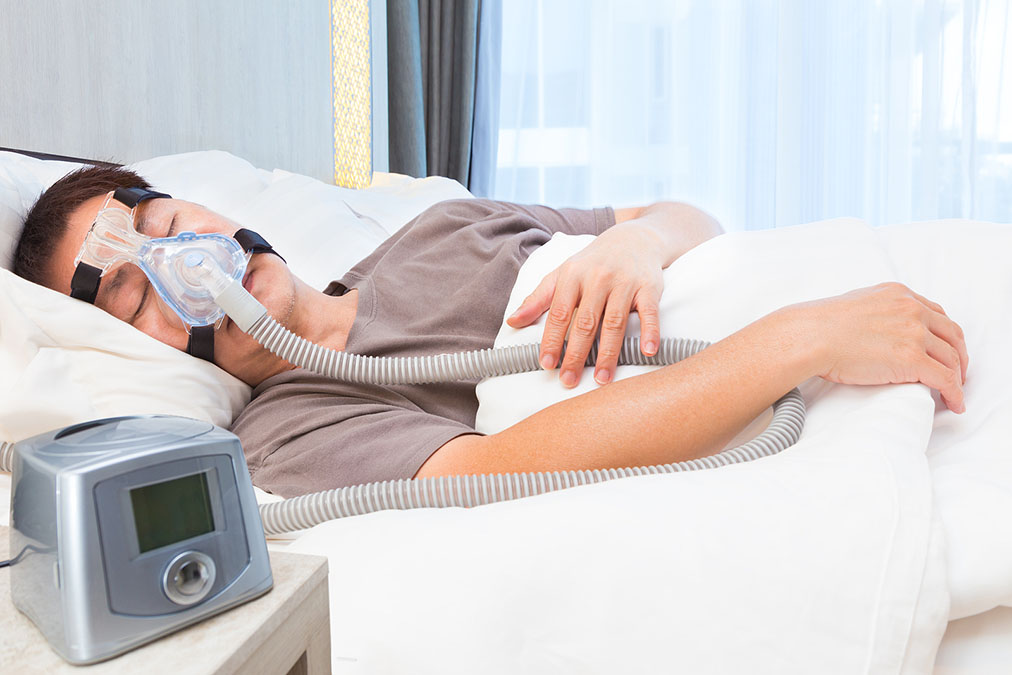 Sleep apnea is a life-threatening disease. It’s also very difficult to treat.
Sleep apnea is a life-threatening disease. It’s also very difficult to treat.
A new study published in the journal Sleep reveals a simple solution. One that just requires a phone call without talking.
I actually should say it’s difficult to treat sleep apnea. There is a very effective treatment called positive airway pressure (PAP) therapy.
However, sticking to PAP therapy can be challenging. And strangely, it seems to be especially difficult for Black and Hispanic patients.
Here’s the problem: many previous studies have found that Black and Hispanic people struggle more than their white counterparts to adhere to PAP therapy, meaning that their condition is often left untreated and their symptoms are worse.
But the issue isn’t even race-specific. Some people just really struggle with PAP because it’s so uncomfortable.
To respond to this problem, researchers wondered whether automated telemonitoring could help them stick to the treatment more faithfully.
The Tele-OSA trial, conducted by Kaiser Permanente in Fontana, California, included 556 patients with sleep apnea.
These patients were new to PAP therapy, which they were all told to use, and were divided into two groups: one received usual care, and the other received telemonitoring.
The telemonitoring group received automated messages through the U-Sleep system by ResMed, which encouraged them to use their PAP devices more consistently.
The study firstly found that Black and Hispanic patients consistently used their PAP devices for fewer minutes per night compared to non-B/H patients.
Here’s a breakdown of the results over two years.
-
1. At 3–6 months: 170.9 vs. 195.5 minutes per night.
2. At 6–12 months: 144.2 vs. 167.1 minutes per night.
3. At 12–18 months: 128.0 vs. 158.9 minutes per night.
4. At 18–24 months: 119.5 vs. 148.1 minutes per night.
It secondly found that the telemonitoring intervention improved adherence among Black and Hispanic patients to the point where they used it more than their non-B/H peers did.
-
1. At 3–6 months: 251.8 vs. 235.2 minutes per night.
2. At 6–12 months: 211.2 vs. 204.9 minutes per night.
3. At 12–18 months: 190.4 vs. 180.3 minutes per night.
4. At 18–24 months: 163.3 vs. 158.9 minutes per night.
So, this study confirms that a telemonitoring intervention can close the gap between people who don’t use PAP regularly enough and those who do. In fact, they ended up with even higher adherence rates after the telemonitoring than those who didn’t really have an adherence problem.
This finding is crucial because better adherence to PAP therapy means better management of sleep apnea and related health issues.
You don’t even have to wait for your doctor to provide telemonitoring. An agreement with a friend or your spouse to remind you at night and check with you in the morning might nudge you towards better adherence.

 Overcoming IBD
Overcoming IBD Multiple Sclerosis
Multiple Sclerosis Banishing Bronchitis
Banishing Bronchitis Gum Disease Gone
Gum Disease Gone Overcoming Onychomycosis
Overcoming Onychomycosis Neuropathy No More
Neuropathy No More The Prostate Protocol
The Prostate Protocol Brain Booster
Brain Booster
 Ironbound
Ironbound
 Solution for Shingles
Solution for Shingles
 The Bone Density Solution
The Bone Density Solution
 The Ultimate Healing Protocol
The Ultimate Healing Protocol
 The Parkinson's Protocol
The Parkinson's Protocol
 The Chronic Kidney Disease Solution
The Chronic Kidney Disease Solution
 Overthrowing Anxiety
Overthrowing Anxiety The Fatty Liver Solution
The Fatty Liver Solution The Hypothyroidism Solution
The Hypothyroidism Solution
 The End of Gout
The End of Gout The Blood Pressure Program
The Blood Pressure Program
 The Oxigized Cholesterol Strategy
The Oxigized Cholesterol Strategy
 Stop Snoring And Sleep Apnea Program
Stop Snoring And Sleep Apnea Program
 The Arthritis Strategy
The Arthritis Strategy The Vertigo & Dizziness Program
The Vertigo & Dizziness Program The 3-Step Diabetes Strategy
The 3-Step Diabetes Strategy Hemorrhoids Healing Protocol
Hemorrhoids Healing Protocol The Erectile Dysfunction Master
The Erectile Dysfunction Master Weight Loss Breeze
Weight Loss Breeze The IBS Program
The IBS Program The Insomnia Program
The Insomnia Program The Migraine and Headache Program
The Migraine and Headache Program The Neck Pain Solution
The Neck Pain Solution The Menopause Solution
The Menopause Solution The Ejaculation Master
The Ejaculation Master The TMJ Solution
The TMJ Solution The Acid Reflux Solution
The Acid Reflux Solution The Fibromyalgia Solution
The Fibromyalgia Solution The Psoriasis Strategy
The Psoriasis Strategy